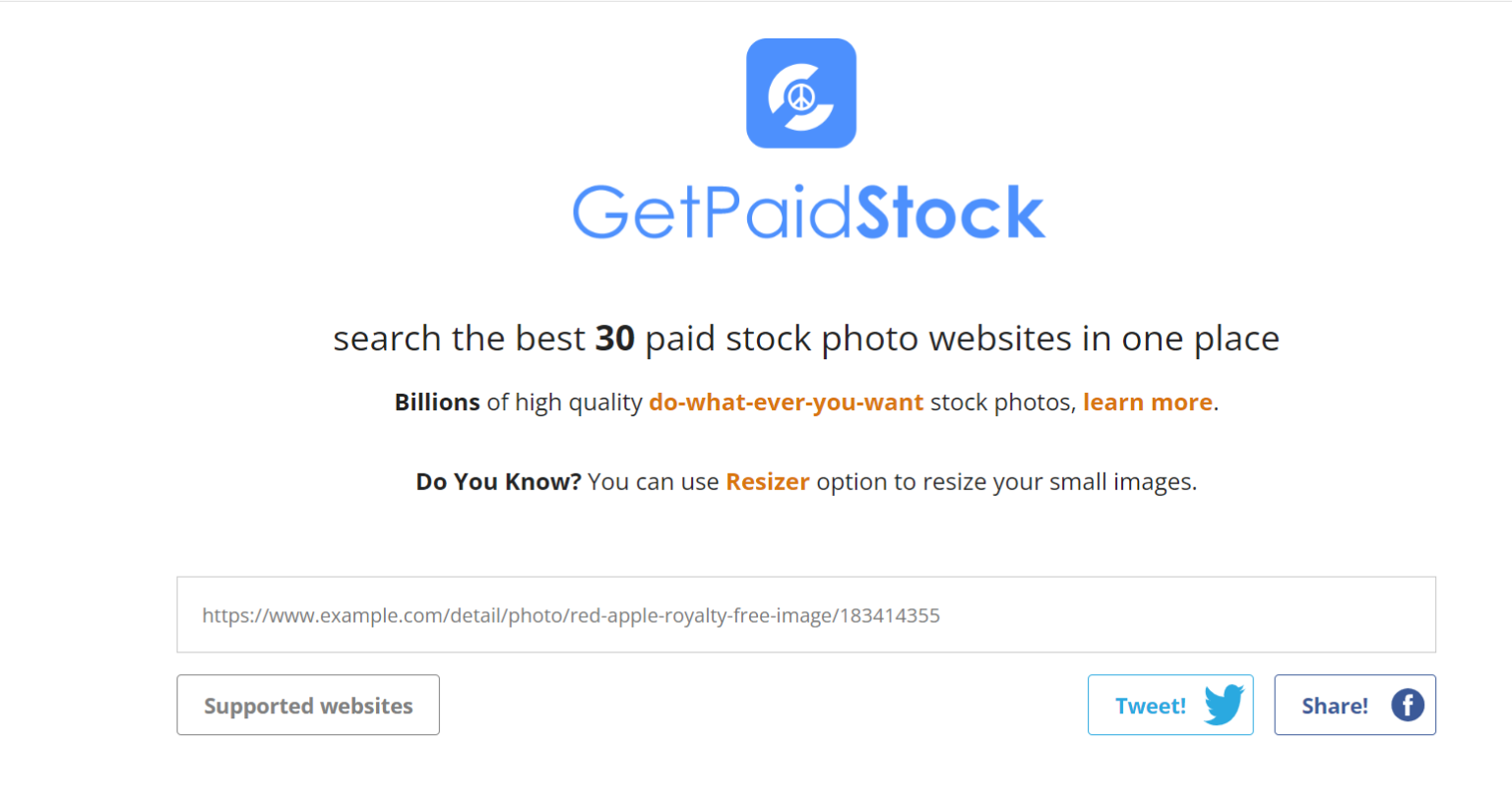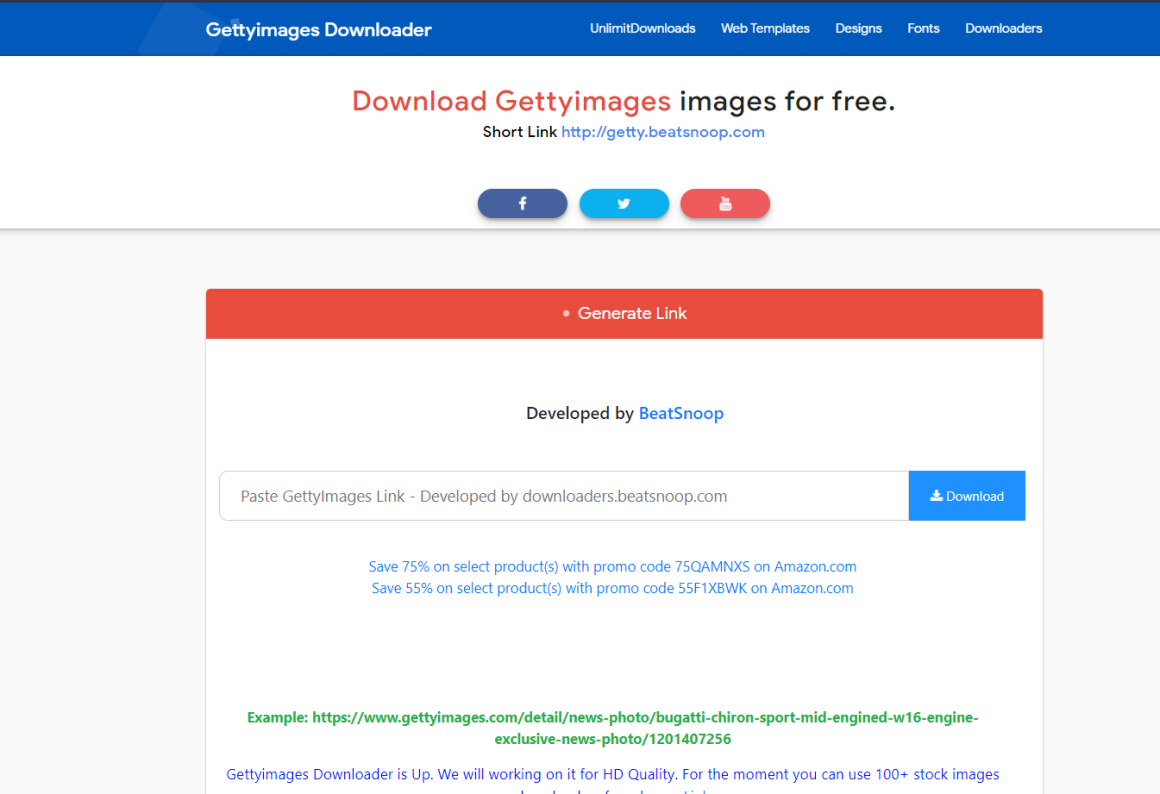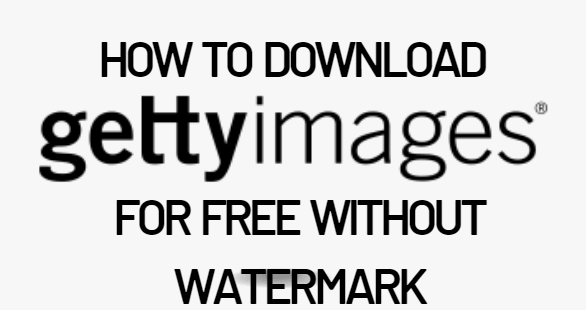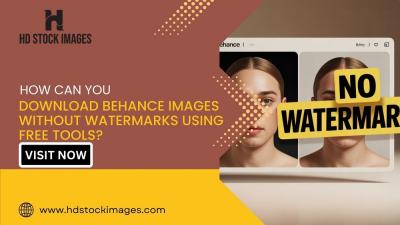Getty Images is one of the world’s leading providers of visual content, with an extensive library of photographs, illustrations, videos, and more. Creatives, marketers, and businesses often rely on these images to enhance their projects, marketing materials, or websites. However, using images from Getty Images involves understanding their copyright and licensing policies. You might have noticed that many of their images come with watermarks. These watermarks are essential for protecting the intellectual property of the photographers and artists. In this post, we'll explore how you can download photos from
Understanding Licensing Options for Getty Images

When it comes to downloading photos from Getty Images, it’s crucial to understand the different licensing options available. This ensures you are using the images legally and ethically, without infringing on copyright laws. Let’s break down the primary licensing options Getty Images offers:
- Royalty-Free License: This license allows you to pay for images once and use them multiple times for various purposes without paying additional fees. However, there might be some restrictions on how you can use these images.
- Rights Managed License: This type of license is generally tailored for a specific use case. You’ll typically need to provide details about how you plan to use the image – such as print run, geography, and duration. The cost can vary significantly based on these factors.
- Editorial Use License: If you are looking for images for news articles, blogs, or other informative content, an editorial license is what you need. These images can’t be altered and are often used to illustrate stories, adding credibility and depth to editorial pieces.
- Extended Licenses: If you require additional usage rights beyond the standard agreements, extended licenses provide more flexibility. This includes options like using images on products for resale or in advertisements without limitations.
Understanding these licensing options is essential not only to protect yourself legally but also to respect the artists and creators behind the images. Each license serves a specific purpose, tailored to different use cases, ensuring you have access to high-quality visuals while maintaining ethical standards.
Before downloading any photo, be sure to read the license agreements thoroughly. Here are a few points to consider:
- Research Usage Rights: Check how you plan to use the photo and ensure it aligns with the licensing type.
- Attributions: Some licenses may require you to credit the photographer or Getty Images as the source.
- Expiration Dates: Certain licenses may have time limitations, so keep track of how long you can use the image.
By fully understanding the licensing options available through Getty Images, you can navigate their vast library with confidence. Choose the right license for your needs, and you can promote your creative projects without worrying about violating copyright laws or using images unethically. Remember, respecting the rights of creators ensures that we all contribute to a culture of creativity and inspiration!
Also Read This: Is Shutterstock Images Safe? Ensuring Trust and Legitimacy in Your Stock Photography
3. Legal Ways to Download Photos from Getty Images

When it comes to showcasing stunning visuals in your projects, Getty Images stands out as a premier source of high-quality stock photography. However, it’s essential to navigate the platform legally and ethically to download photos without getting into hot water. Here are some legitimate methods you can use:
- Purchase Licensed Images: The most straightforward way to download images from Getty is to purchase the rights to use specific photos. This option is great for businesses or individuals looking for specific images for marketing materials, blogs, or presentations.
- Subscription Plans: If you're a frequent user, consider subscribing to one of Getty's plans. Subscriptions often provide access to a vast library of images for a fixed monthly fee, making it a cost-effective solution for regular content creators.
- Royalty-Free Images: Some images on Getty are available under royalty-free licenses. Purchasing these images allows you to use them without paying extra fees every time you use them, as long as you adhere to the terms outlined in the license.
- Editorial Use Images: If you’re working on journalistic or non-commercial projects, you may find images licensed for editorial use. Although these may come with specific restrictions, they can be a great way to incorporate high-quality images that relate to current events.
Remember, downloading images from Getty Images without proper licensing or payment is a strict no-no. Not only does it jeopardize your reputation, but it can also lead to legal consequences. Always ensure you’re familiar with the specific license associated with any image you intend to use.
Also Read This: How to Save Photos from Getty Images Without the Watermark
4. Using Getty Images' Free Trial for Image Downloads

If you’re hesitant about investing in stock images from Getty Images, you might want to take advantage of their free trial offer, which can be an excellent way to explore their extensive library without financial commitment. Here’s how to make the most out of a free trial:
- Sign Up for the Free Trial: Visit the Getty Images website and look for any promotional offers for a free trial. This usually involves filling out a registration form where you may need to provide payment details (though you won’t be charged during the trial period).
- Explore the Library: Once you’ve signed up, dive into Getty’s vast collection! Use keywords and filters to find images that align with your project needs. This could be anything from wildlife photos to abstract art.
- Download the Images: During the trial, you can typically download a selection of images — often at lower resolutions. These images can be great for testing how they fit into your projects before making a larger investment.
- Pay Attention to Usage Rights: Even during the trial, remember that the downloaded images must be used in accordance with Getty’s licensing terms. Review the terms for each image to ensure your use is compliant.
The free trial is a perfect opportunity to evaluate the quality and relevance of the images you find. Once the trial is over, if you find that you loved the images and they fit your needs, you can opt for a subscription or individual purchase to continue using them in your work.
Also Read This: How Getty Images Compensates Photographers and Contributors
5. Exploring Subscription Plans for Accessing Stock Photos
If you're serious about finding high-quality images for your projects, subscription plans for stock photo services can be a game-changer. Many platforms, including Getty Images, offer a range of subscription options tailored to fit different needs—whether you’re a freelance designer, a business owner, or simply someone who loves to create. Let’s break down what you can expect from these plans.
Benefits of Subscription Plans:
- Cost-Effectiveness: Instead of paying for each individual image, a subscription model can often save you money if you frequently need images. Packages typically offer a set number of downloads per month at a lower rate than one-off purchases.
- Extensive Libraries: Subscribers generally gain access to an extensive library of images, often including premium content that’s not available to one-time purchasers.
- No Watermarks: When you download images through a subscription, you get high-resolution files without watermarks, which is essential for professional use.
- Flexible Usage: Subscription plans often come with flexible licensing options that allow for varied uses, from print media to online platforms, giving you more freedom in your creative projects.
When choosing a subscription plan, consider the following factors:
- Frequency of Use: Are you a heavy user who needs multiple images each month, or do you only need a few? This will help you decide between monthly or annual plans.
- Types of Images: Do you need specific types of images, such as editorial content or illustrations? Ensure the service offers what you're looking for.
- Usage Rights: Always read the fine print regarding licensing and usage rights. Make sure the subscription covers the scope of your intended use.
For many content creators, opting for a subscription plan can enhance both the quality and efficiency of their work. Check out different plans available from Getty Images or other stock photo providers to find one that best fits your needs!
Also Read This: How to Get into Getty Images for Aspiring Photographers
6. Utilizing Creative Commons Licensed Images
If you're exploring options beyond paid stock photos, *Creative Commons (CC) licensed images* can be an amazing resource. These are images that creators have made available for public use, often with some conditions attached. Understanding how to navigate these licenses will help you access a world of stunning visuals without the worry of copyright infringement.
What are Creative Commons Licenses?
Creative Commons licenses are designed to give authors, artists, and creators more control over how their work is used and shared. They cover a spectrum of permissions, from allowing any kind of usage (even commercial) to more restrictive terms (like non-commercial use only). Here are some key types of Creative Commons licenses:
- CC BY: Allows users to distribute, remix, adapt, and build upon the work, even commercially, as long as they credit the original creator.
- CC BY-SA: Similar to CC BY, but adapted materials must be licensed under the same terms.
- CC BY-ND: Allows for redistribution but prohibits modification; the original work must be shared as-is.
- CC BY-NC: Allows for non-commercial use only, with credit to the original creator.
Finding Creative Commons Images
Platforms like Flickr, Wikimedia Commons, and even Google Images come equipped with filters to help you find CC-licensed images. Just be sure to check and adhere to the specific license attached to any image you plan to use. Crediting the creator is typically a requirement, so make sure you include their name and a link to the original source if necessary.
Things to Keep in Mind:
- Always double-check the specific license of each image before using it.
- When in doubt, reach out to the creator for clarification about their terms.
- Consider contributing back to the creative community by sharing your own images under a Creative Commons license!
By utilizing Creative Commons licensed images, you not only access fantastic visuals but also support the ethos of sharing and collaboration within the creative landscape. Happy image hunting!
Also Read This: Discover How Expensive Shutterstock Is
7. Alternatives to Getty Images for Free Stock Photos
While Getty Images is a popular choice for high-quality visuals, it's not the only option out there. If you're looking for free stock photos that you can legally and ethically download, there are several fantastic alternatives. Let’s dive into some of these resources that can help you find stunning images without slapping your wallet.
- Unsplash: This platform boasts a massive library of free, high-resolution photos contributed by photographers from around the globe. The best part? You can use these images for personal or commercial purposes without the need for attribution, although giving credit to the photographers is always appreciated.
- Pexels: Similar to Unsplash, Pexels offers a diverse range of free stock photos and videos. Their content is searchable and comes with a generous licensing agreement, making it easy to find what you need for your projects.
- Pixabay: With over 1.7 million free stock photos, vectors, and illustrations, Pixabay is another excellent option. Their images are released under the Pixabay License, which allows most uses without permission or giving credit to the artist.
- Burst by Shopify: Intended for entrepreneurs, Burst provides free stock images that can be used in business projects. Their collection is curated with a focus on helping you grow your brand.
- Freepik: Offering both free and premium resources, Freepik has a wide selection of photos, illustrations, and vector graphics. Be mindful of the attribution requirement for free resources, though!
Each of these sites has its unique strengths, so explore them based on your specific needs. Whether you're looking for images to spruce up a blog post, create a landing page, or enhance your social media presence, you're bound to find something that fits your vision.
8. Conclusion: Importance of Ethical Usage in Image Downloading
As we've explored in this blog, downloading images ethically and legally is paramount in today's digital landscape. When we respect copyright laws and give credit where it's due, we not only protect ourselves from potential legal issues but also support the creative community that enriches our projects.
Being an ethical downloader means understanding the implications of our image usage. When you choose to use images within the bounds of copyright, you contribute to a culture that values and respects creativity. It's not just about avoiding legal consequences; it's about honoring the hard work of photographers, artists, and creators who pour their heart into their work.
Additionally, using platforms that promote ethical practices gives you access to a wealth of resources without compromising integrity. By utilizing the alternatives we've discussed, you can find high-quality images that suit your needs, all while upholding the principles of ethical image usage.
In the end, let's strive to be responsible digital citizens. Whether it's by avoiding watermarks, shunning unauthorized downloads, or simply being mindful about attributions and licensing, the small, conscientious choices we make can have a significant impact. Happy downloading!
 admin
admin








